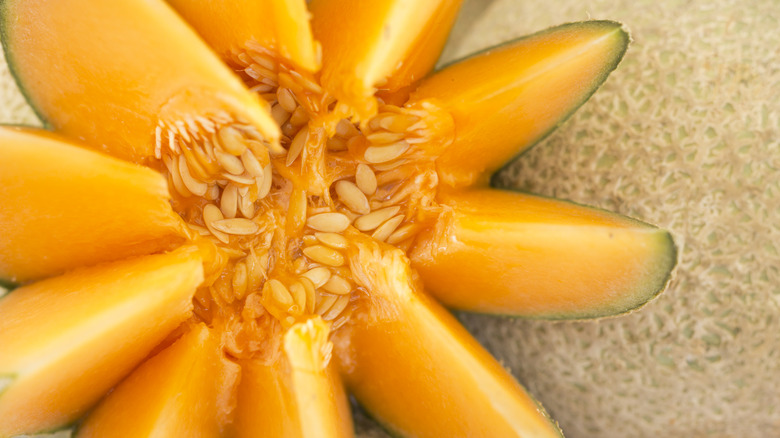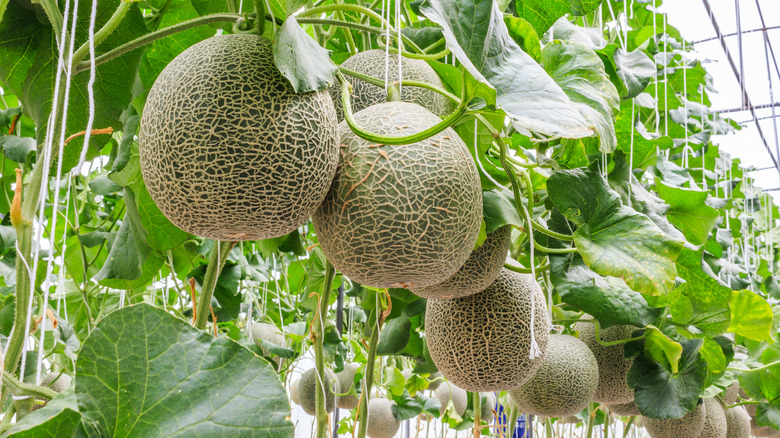The Real Reason Cantaloupe Goes By Many Names
A cantaloupe by any other name — would taste the same? Maybe, but not always. Cantaloupe varieties can differ in characteristics and taste while carrying quirky names such as spanspek, charentais, and rockmelon. Confusion arises over hybrid versions and other fruits in the muskmelon family, but some things about the beloved juicy fruit are uncontested regardless of monikers or scientific designations.
For example, cantaloupes roll into global kitchens packing some universal juicy nutrients. With 90% water content, hydration is a given, lending a hand to digestion as well as kidney and heart health, per Healthline. Tucked within its tough exterior lie goldmines of vitamins and minerals, including folate, vitamins C and K, potassium, and beta-carotene. The fiber in cantaloupes can also help prevent constipation and weight control.
With all that goodness, it's no wonder the sweet round fruit has several incarnations around the world. Therein lies the secret to why cantaloupes go by so many different names.
What's in a name?
The scientific classification of cantaloupe is Cucumis melo reticulatus, which identifies the U.S. version with its rough, web-like "reticulated" exterior, according to WebMD. But the real mystery of why cantaloupes have numerous aliases has nothing to do with appearance — it simply comes down to location.
First, there's the mystique of what's designated a "true cantaloupe" by those outside the United States. The European cantaloupe claims status as the real-deal original. Giving credence to this assertion is the cantaloupe's early arrival into Italy from Asia, explains Home Stratosphere. It reportedly landed in the Papal residence of Cantalupo, from which it got its name.
The French have their own location-based moniker of Charentais cantaloupe, which hails from the western region of Poitou-Charentes. The petite melon typically weighs only 2 pounds with a concentrated burst of flavor and aroma, per Home Stratosphere. The expensive Japanese cantaloupe — known as the "crown melon," or the more formal "Yubari King" — likewise takes its name from where it's exclusively grown in Yubari using elaborate gardening techniques. The same goes for Persian cantaloupes, named for the ancient name of modern-day Iran, which many believe is the true origin country of cantaloupes.
Some of the more colorful names for cantaloupe remain a semi-mystery, including the South African spanspek and the Australian rockmelon. Aussie natives insist the melon has the shape and appearance of a rock (via In The Know), as do a whole lot of TikTokers.

